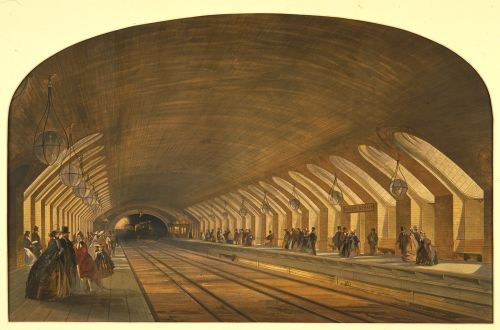The line was built using the cut-and-cover method of tunnelling and had frequent gaps in the roof to allow steam to escape. The line is still in operation today as part of the Circle and Hammersmith & City lines.
"The arrival of the Tube was truly revolutionary and today it is still admired around the world," says Mr Boris Johnson, the Mayor of London. "It annihilates distance, liquidates traffic and is the throbbing cardiovascular system of the greatest city on earth. It continues to play a hugely important role in the success of our capital – efficiently moving record numbers of people during the London 2012 Games. Our massive upgrade programme builds on the engineering ingenuity of our Victorian forefathers and through new signalling, trains and track, millions of Londoners and visitors will continue to benefit from what is arguably the best, and most iconic, underground transport system in the world."
"As we mark the 150th anniversary of the world's first underground railway we are also building for the future – transforming stations and replacing trains, signals and track," says Mr Mike Brown, managing director of London Underground. "Our passengers are already seeing the benefits, with more frequent and reliable services on the Jubilee and Victoria lines. This year will see even more – with a greater frequency of services on the Central and Victoria lines and more of the new air-conditioned trains, which will soon serve 40% of the network. It is this sustained investment that will enable us to create a network able to support London's growing population and maintain our city's vital role in the UK economy for the next 150 years."
London Underground will stage a series of events to mark the anniversary starting with the recreation of the first passenger journey using a Metropolitan Railway steam locomotive and coaches on January 13.

